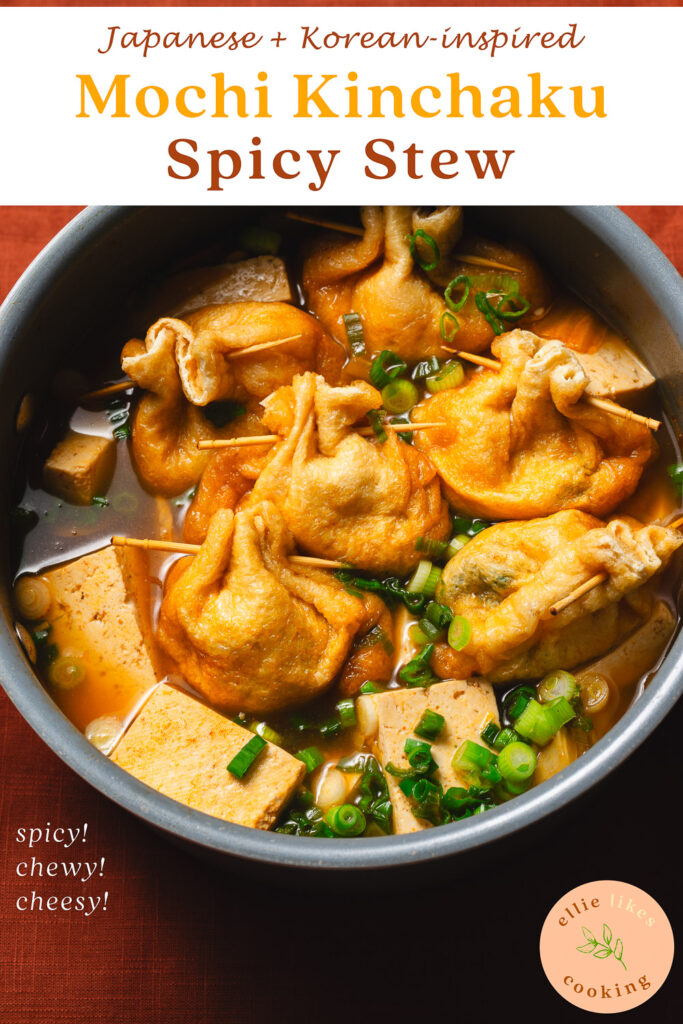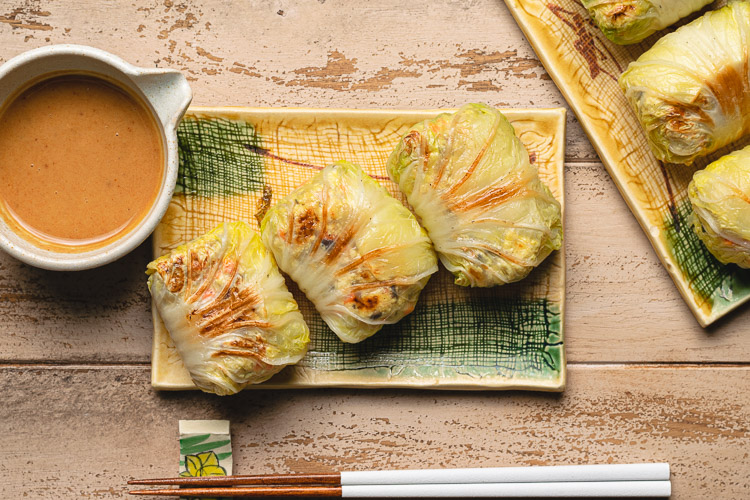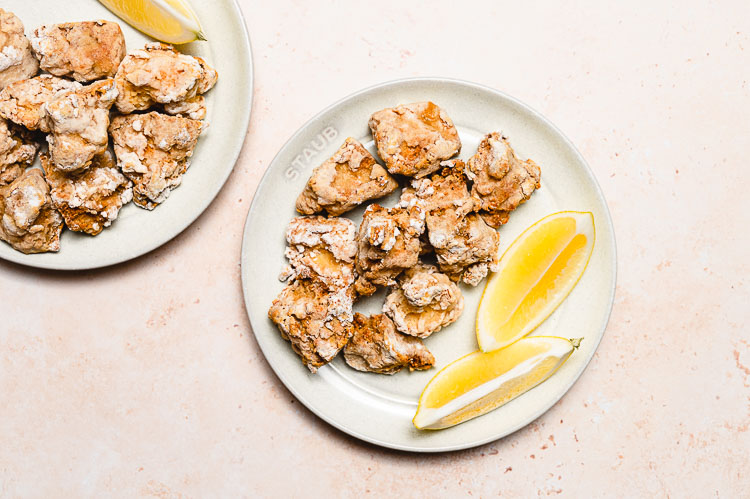Spicy Mochi Kinchaku Stew | トッポギ風餅巾着鍋
This comforting Japanese & Korean-inspired stew features chewy mochi tucked inside fried tofu pouches and simmered in a spicy, savory broth.
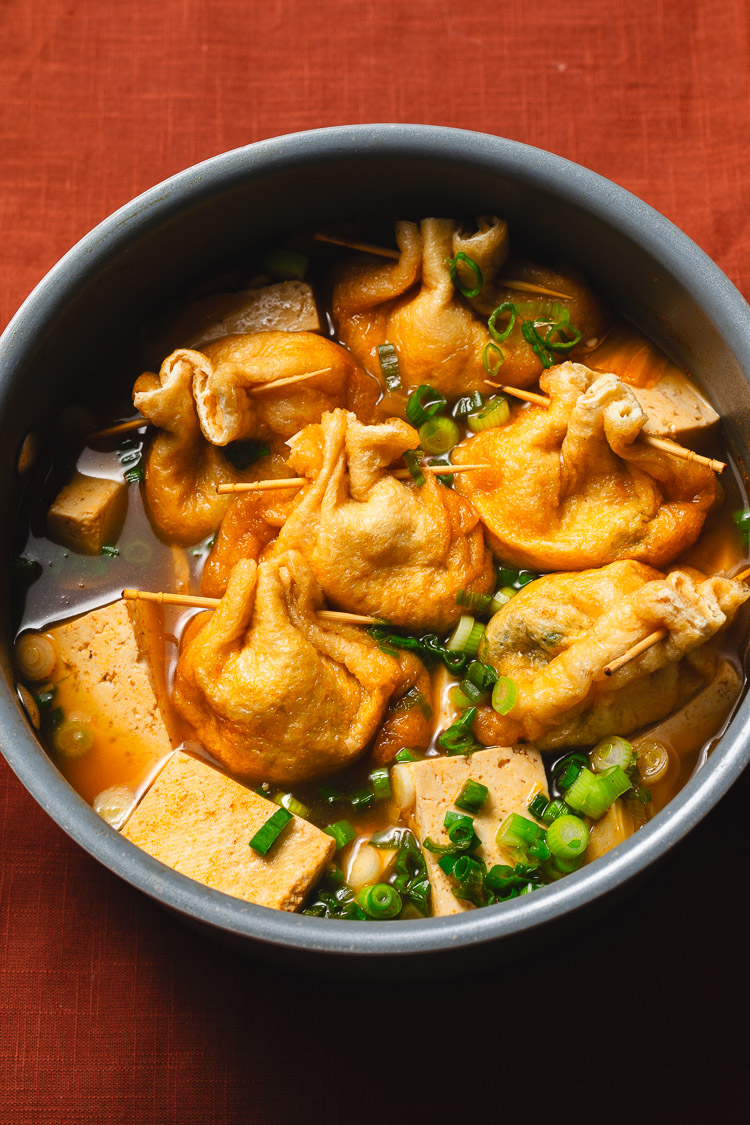
Japanese and Korean Inspired Recipe
This stew is inspired by Japanese nabe and Korean tteokbokki. We add a variety of veggies and tofu along with the mochi kinchaku, similar to Japanese nabe/hot pot which includes lots of veggies and protein. The flavor of the stew is inspired by Korean tteokbokki which is a dish of rice cakes cooked in a spicy red sauce.
What is Mochi Kinchaku?
Kinchaku 巾着 is a Japanese drawstring bag often used when wearing a kimono or yukata (summer kimono). In this recipe, aburaage is the “kinchaku” (pouch) that carries the mochi. You can also make kinchaku with egg, meat, fish, veggies, noodles, or whatever else you want to stuff it with. Mochi kinchaku is very popular and common in oden these days.
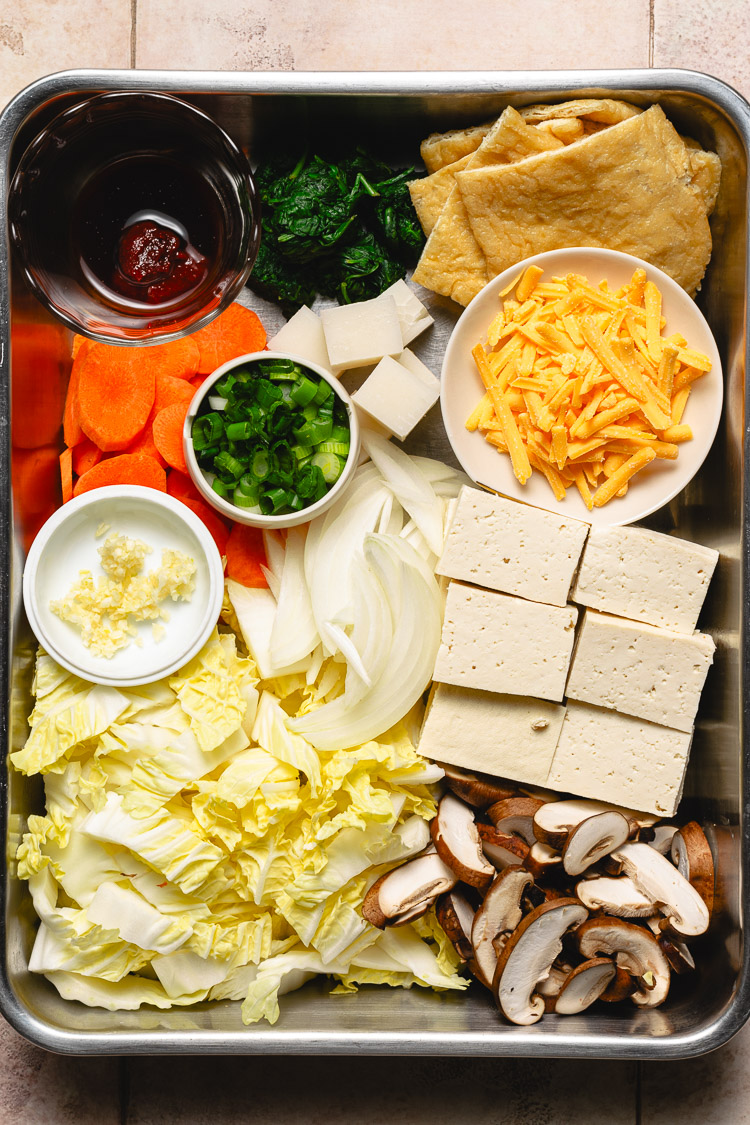
Key Ingredients
- Aburaage(油揚げ) ⟶ Deep fried tofu slices. It’s puffy and airy inside – perfect for stuffing! You can typically find aburaage in the frozen section of Japanese markets. Look for the ones that are long and rectangular (as opposed to shorter and more square-ish).
- Not to be confused with atsuage 厚揚げ, which is another form of deep fried tofu. Atsuage is a thick block of fried tofu.
- Mochi ⟶ I use kiri mochi for convenience, but you can try other kinds of mochi (maybe Korean rice cakes used in tteokbokki?!) or make your own with glutinous rice flour + water.
- Gochujang ⟶ For spice! Since this stew is inspired by Korean tteokbokki, gochujang is a must (but if you’re sensitive to spice, you can cut back or try replacing with miso).
- Tofu ⟶ For extra protein! I recommend soft or medium firm tofu.
- Veggies ⟶ Napa cabbage, carrots, mushrooms, onions, spinach, bean sprouts, daikon…feel free to throw in whatever you like!
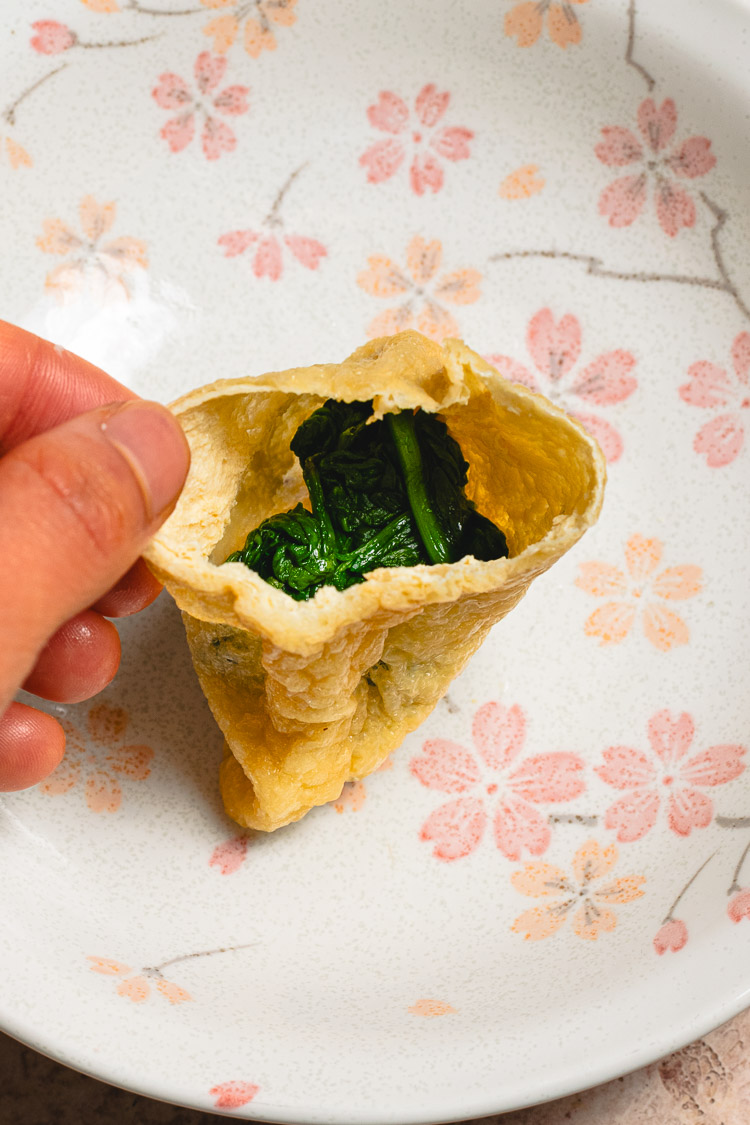
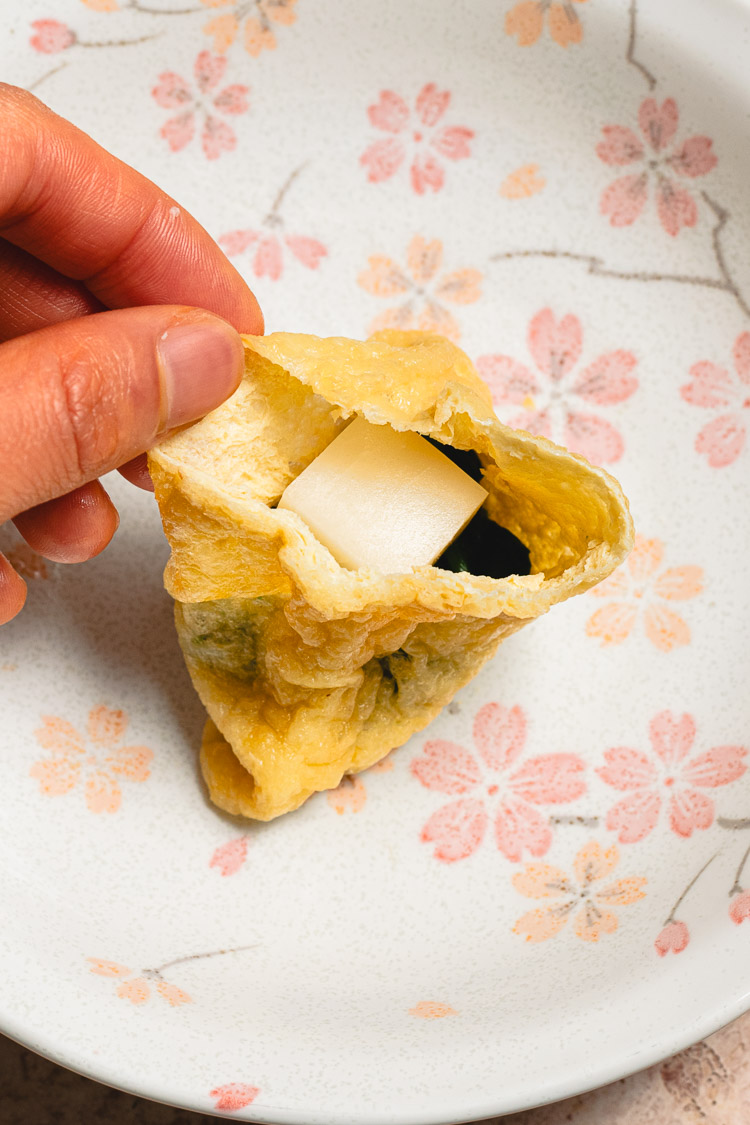
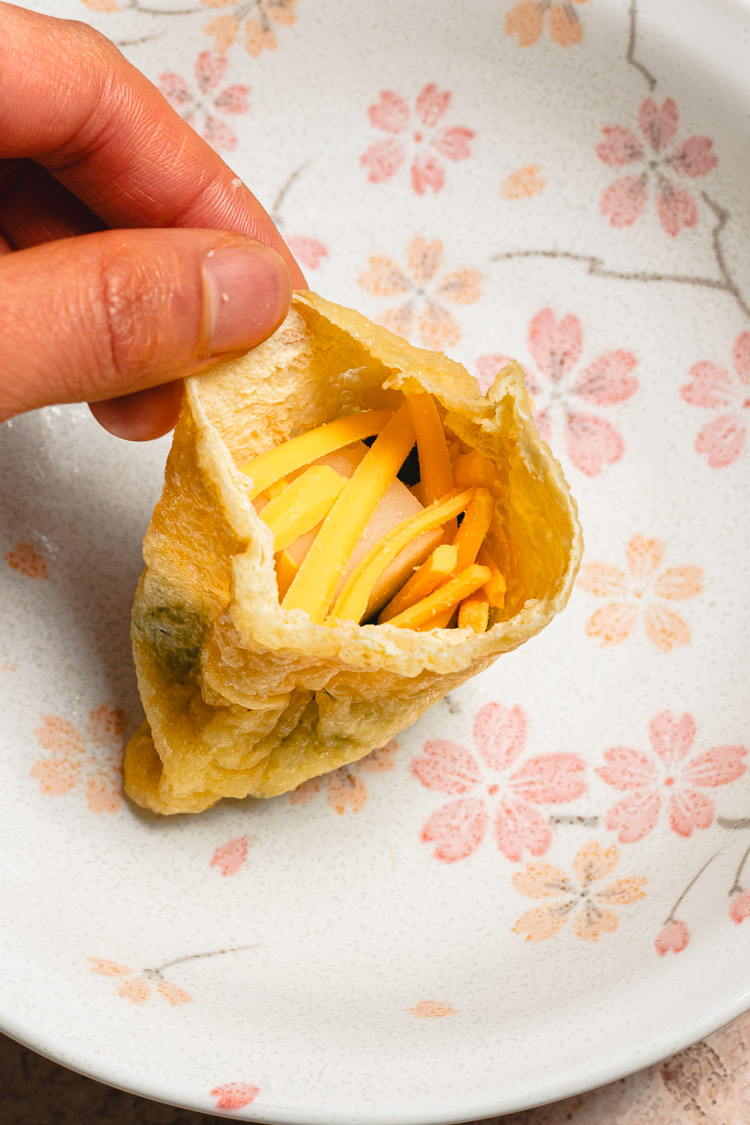
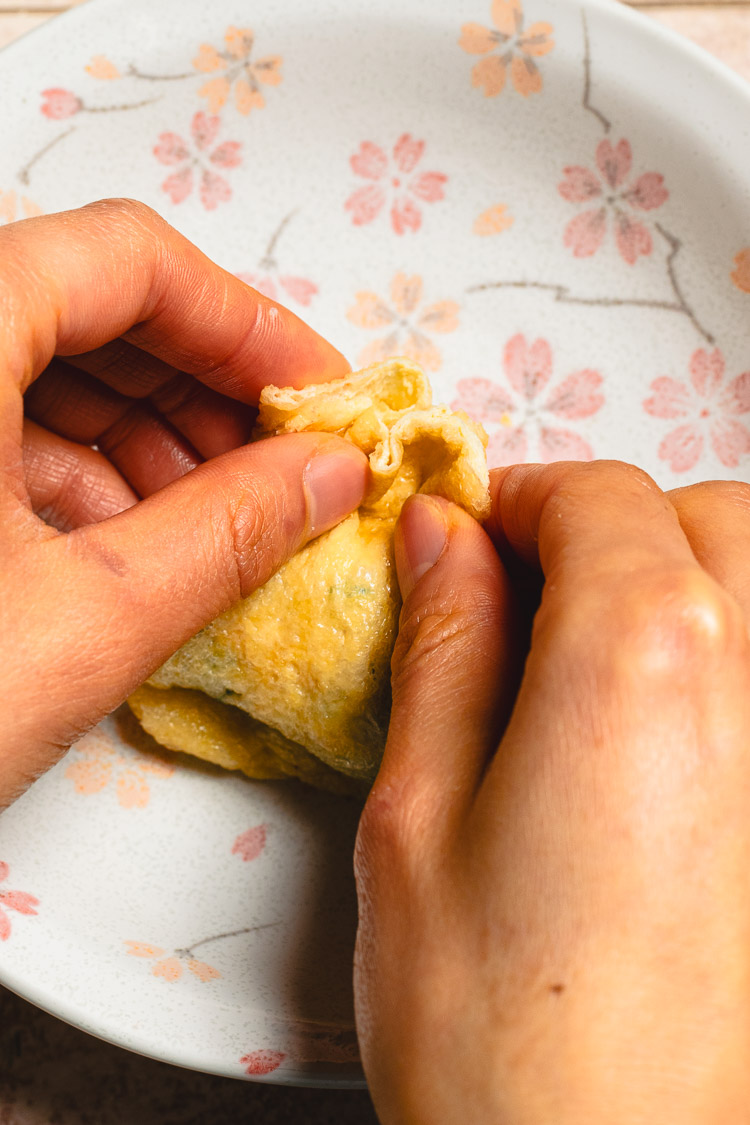
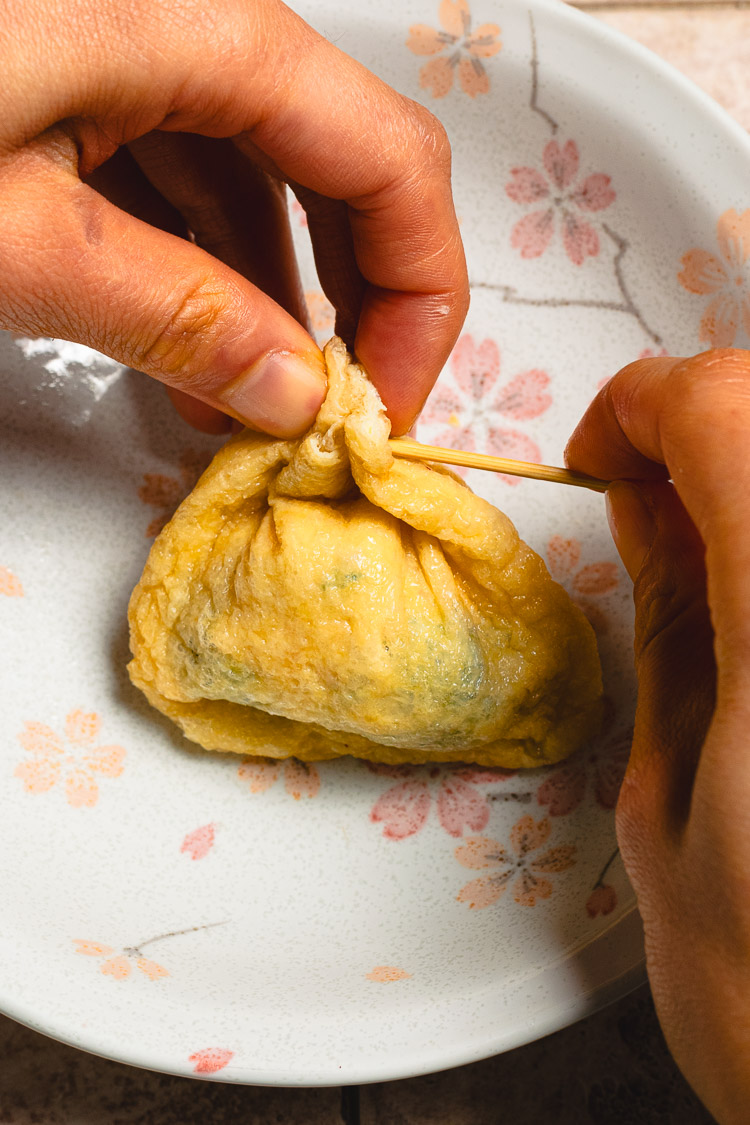
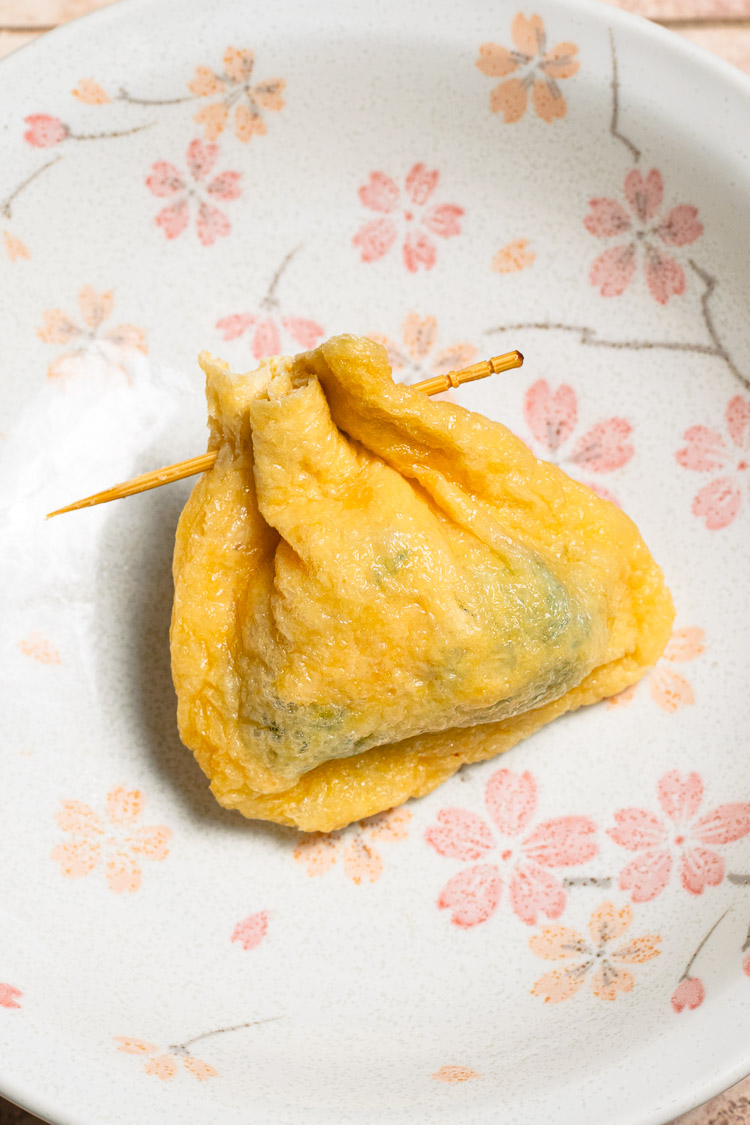
Tips for Success
Tightly seal kinchaku ⟶ So the mochi/cheese doesn’t spill out! Fold the open end of the aburaage in a zigzag, like folding a fan, and thread a toothpick (or a spaghetti noodle) through to seal it.
Simmer until the mochi is soft ⟶ Typically about 10-15 minutes, but be sure to check the mochi before turning off the heat. You can press on the mochi kinchaku or poke with a toothpick to test the softness.
Quick & easy recipe ⟶ If you don’t want to make your own kinchaku, you can buy mochi kinchaku at Japanese grocers in the frozen section. They are typically filled with just mochi and tied with kanpyo (dried gourd).
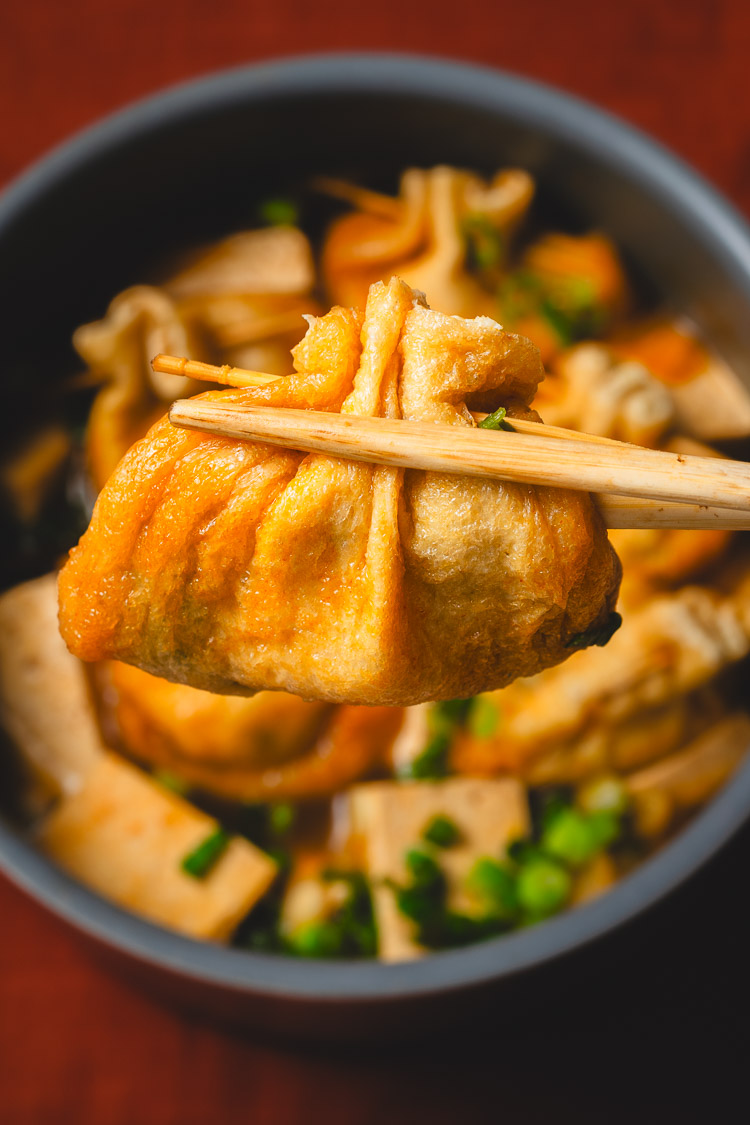
Spicy Mochi Kinchaku Stew FAQ
Can I prep this stew in advance?
This stew is best eaten right after it’s made, since the mochi will harden over time. You can assemble the mochi kinchaku and prep the stew up to step 4, then store them separately. When ready to eat, bring the stew to a simmer, add the mochi kinchaku, and simmer until the mochi is soft.
Do I need to boil aburaage before using?
Technically you can skip this step, but I recommend boiling aburaage for a minute to remove excess oil. You can also pour boiling hot water over it.
What if I can’t find kiri mochi?
Any kind of plain, unsweetened mochi (dry or fresh) should work. You can also make your own mochi with glutinous rice flour and water (or even tofu).
Can I make this non-spicy?
If you can’t handle spice, you can omit the gochujang and try miso instead.
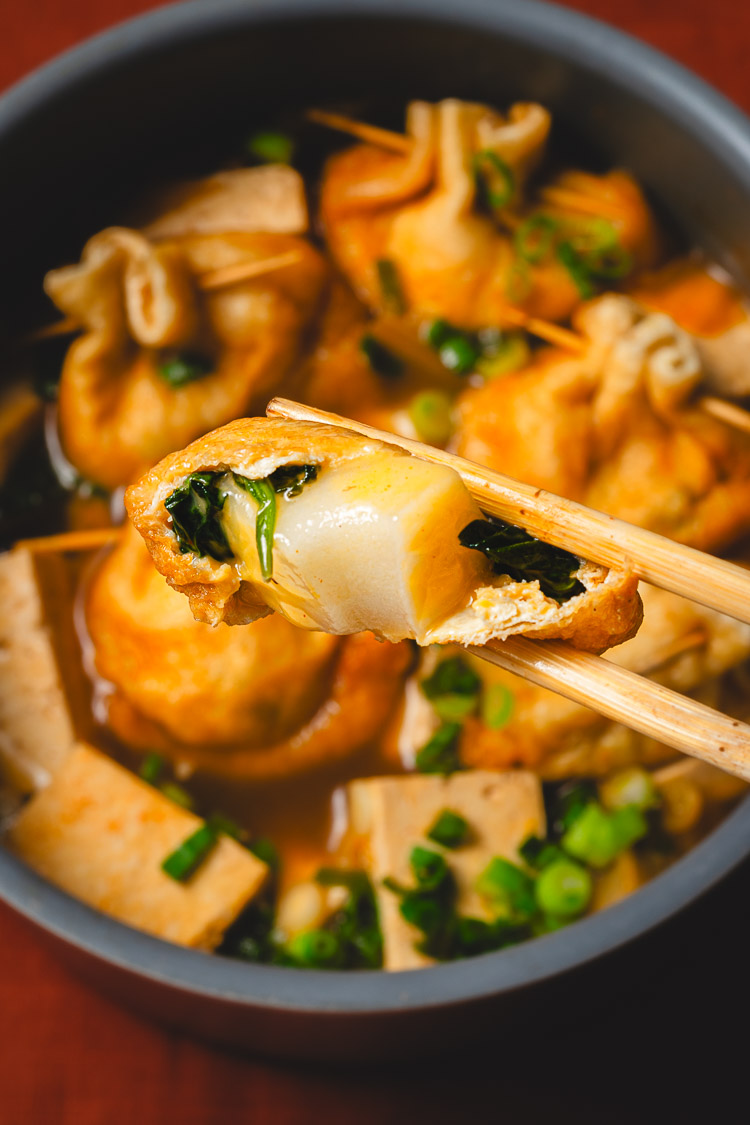
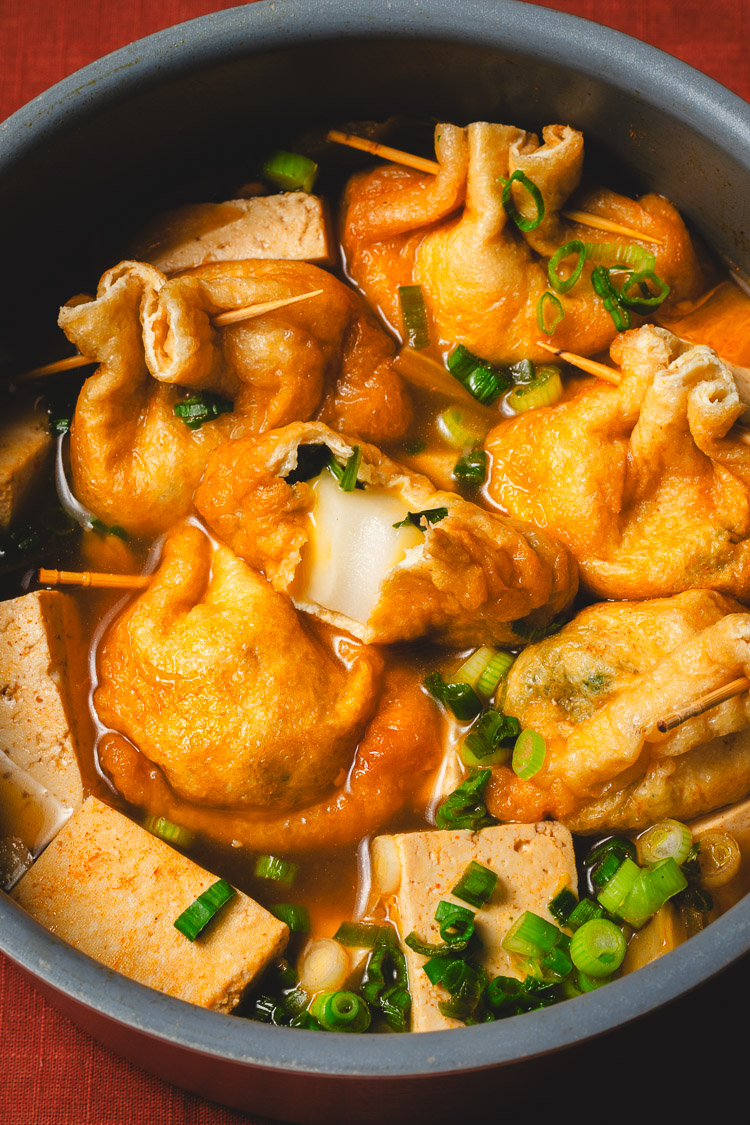
More Comforting Stews
- Leek and White Bean Stew
- Soy Milk Cream Stew
- Vegan Japanese Cabbage Rolls
- Quick Eggplant Chana Masala
- Vegan Hayashi Rice
- Japanese Curry with Red Lentils
If you try out this spicy mochi kinchaku stew, don’t forget to leave a comment/rating down below and tag me in your photos on instagram @ellielikes.cooking. I love seeing all of your tasty recreations!
Spicy Mochi Kinchaku Stew | トッポギ風餅巾着鍋
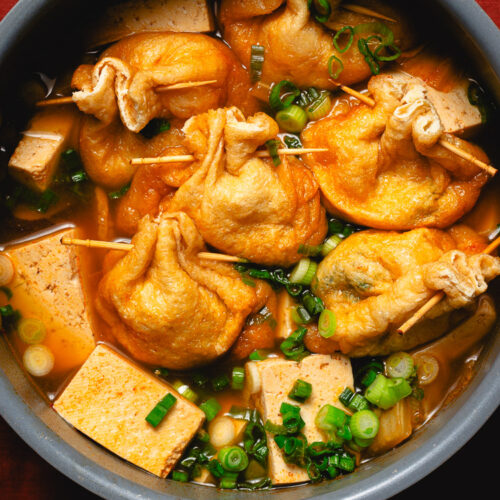
Ingredients
Mochi Kinchaku
- 3 aburaage sheets
- 6 tbsp cooked spinach
- 1 kiri mochi cut into 6 cubes (adjust if altering batch size)
- 6 tsp vegan cheese shreds optional
Veggies + Tofu
- 2 tsp sesame oil
- ¼ onion sliced
- 1 clove garlic minced
- 4 napa cabbage leaves chopped
- 1 carrot thinly sliced
- 2 shiitake mushrooms sliced
- 8 oz soft or medium firm tofu cubed
- 1 green onion sliced
Seasonings
- 1½ tsp
gochujang*1 - 1½ tsp mirin
- 1½ tsp soy sauce1
- ¼ tsp vegetable bouillon
- 2 cups water
Instructions
Prepare Mochi Kinchaku
- Bring a pot of water to a boil and boil aburaage sheets for 1 minute to remove excess oil. Drain and rinse, then gently squeeze out excess water.
- Cut aburaage sheets in half so you have 6 squares (per original batch size).
- Stuff each aburaage pocket with spinach, mochi, and vegan cheese. Fold the top in a zigzag and seal with a toothpick so the fillings don't fall out.
Cook Stew
- Heat sesame oil in a pot over medium heat. Once fragrant, add onions and cook until they start to soften, about 3 minutes.
- Add garlic, carrots, napa cabbage, and mushrooms. Cook for 1-2 minutes until the veggies start to soften.
- Add gochujang, mirin, soy sauce, and bouillon and stir for 30 seconds.
- Place tofu on top and pour in water. Bring to a boil, then reduce heat to medium low and simmer for 10 minutes.
- Add mochi kinchaku to the pot so that most of it is submerged in liquid so the mochi softens. Simmer 5-10 minutes until mochi is soft.
- Turn off heat and garnish with green onions.
Notes

*Disclosure: This page may contain affiliate links. As an Amazon Associate I earn from qualifying purchases, but the price remains the same to you. Thank you for supporting Ellie Likes Cooking!
Save for later!
